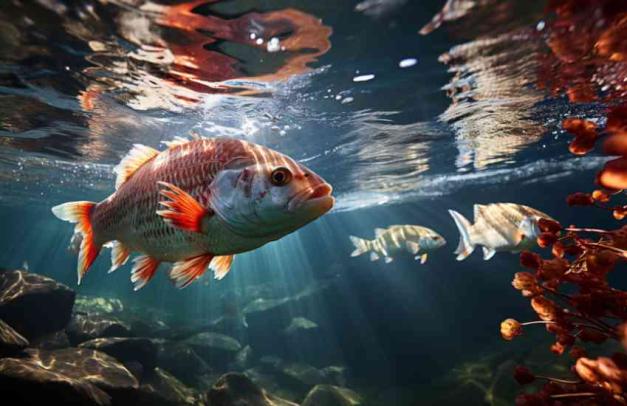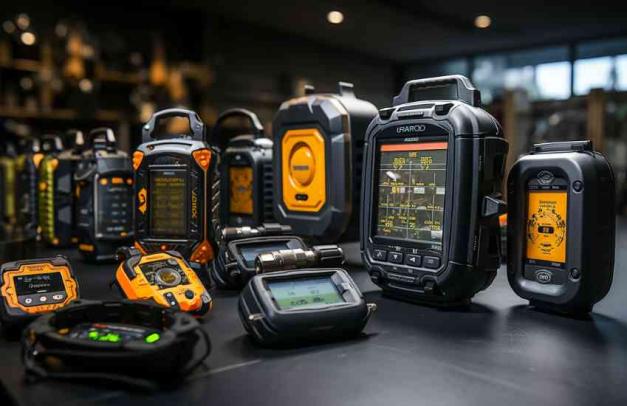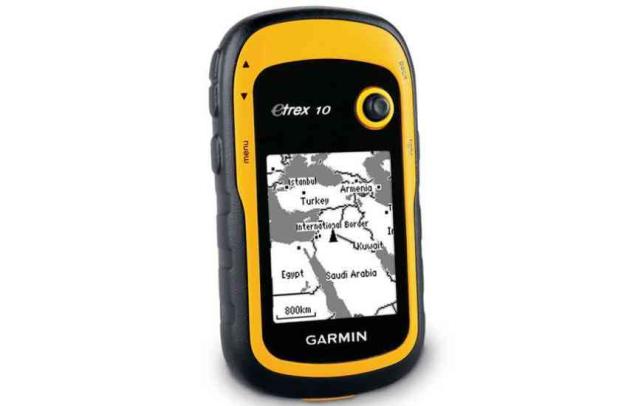4.2 Secrets to Fishing Hotspots: How to Read Water & Locate Fish

Introduction:
Welcome to another interesting section. As seasoned anglers, we know that success in fishing doesn’t just depend on casting the line; it’s about knowing where and when to cast it.
In this section, we will delve deep into the fascinating world of locating fishing hotspots by reading the water and leveraging various tactics and technologies. My years of experience on the water will be your guide as we explore the different dimensions of this craft.
By the end of this article, you’ll learn about:
- Definitions and features of underwater structures: drop-offs, reefs, and points.
- Locating techniques while kayak fishing.
- Strategies for fishing around these structures.
- Adapting techniques for different structures.
- How environmental factors affect fishing.
- Using fish finders and GPS devices effectively.
Understanding Underwater Structures: Drop-offs, Reefs & Points
Navigating the underwater geography of lakes, rivers, and coastal waters requires both art and science. Here’s how to unravel the secrets of underwater structures.
Drop-offs
Drop-offs are places where the bottom contour takes a steep dive. During my early days in Lake Superior, I found that drop-offs were gold mines for attracting fish, especially walleye.
You too can identify drop-offs by observing the watercolor or using a sonar device. Focus on areas where shallow water suddenly becomes deep, offering a transition zone for predators.
Reefs

Reefs are often overlooked, but they can be teeming with life. On a trip to the Florida Keys, I ran into a situation where the fish were unresponsive in open water. I decided to explore nearby reefs and discovered a plethora of snappers and groupers hiding among the corals.
Finding reefs requires a bit of research, local knowledge, or technology like GPS and sonar. Look for reefs in coastal areas, but don’t forget inland freshwater reefs, which can be equally productive.
Points
Points are protruding landmasses that can significantly alter water flow and provide ambush opportunities for fish. While fishing on Lake Champlain, I observed that points were great for catching largemouth bass.
You can locate points by studying maps, using GPS, or simply observing the shoreline. Fishing around points requires patience, careful casting, and the understanding that each point can be different.
Analyzing Water Temperature, Salinity & Oxygen Levels
Understanding the physical properties of water is essential for finding fish hotspots. Let’s dive into how to analyze these factors.
Water Temperature
Fish are ectothermic creatures; they rely on external sources to regulate their body temperature. I remember fishing in Alaska and struggling to find salmon. I discovered that they were in deeper, warmer waters, away from the chilled surface.
You can use a basic thermometer or an advanced fish finder to measure water temperature. Target areas with the right temperature for the specific species you’re pursuing.
Salinity
The salinity level is vital in coastal areas. I was fishing for speckled trout near a river mouth in the Gulf of Mexico and couldn’t understand why they were so scarce. I later realized that recent rains had decreased salinity levels in that area, pushing the fish further out.
Consider investing in a salinity meter or simply rely on local knowledge to understand the salinity patterns.
Oxygen Levels
Oxygen levels can influence fish behavior significantly. In one of my trips to a shallow lake in Texas, I found the largemouth bass to be sluggish and unresponsive. I then focused on areas with aquatic vegetation, which improved oxygen levels and found success.
Investing in an oxygen meter can help, but you can also look for natural signs such as active baitfish and healthy vegetation.
Utilizing Technology: Fish Finders and GPS Devices for Effective Fishing
Technology has changed the way we fish. In this section, we’ll explore two critical technologies that have personally revolutionized my fishing experience: Fish Finders and GPS Devices.
Fish Finders

Fish finders are like a second pair of eyes beneath the surface. In Lake Erie, I was targeting smallmouth bass and found it difficult to locate them. A fish finder helped me identify underwater rock formations where the fish were hiding.
You should consider a fish finder with both Down Imaging and Side Imaging for a detailed underwater view. Remember to read the manual and spend time understanding how to interpret the display.
GPS Devices

GPS devices have been a game-changer for marking and returning to productive spots. I recall marking a hotspot in the Chesapeake Bay for striped bass. Returning to that exact spot during different seasons was made easy with GPS.
Invest in a GPS unit that allows you to mark waypoints, create routes, and integrate with charts. Devices with preloaded maps and the ability to add custom maps can be particularly useful.
At the End
Locating fishing hotspots is a fascinating and rewarding process. From understanding underwater structures like drop-offs, reefs, and points to analyzing water temperature, salinity, and oxygen levels, you’ll develop a deeper connection with the water.
Embrace technology like fish finders and GPS devices to enhance your ability to locate fish effectively. And remember, each day on the water adds to your experience, transforming the lessons from this chapter into instinct.
Whether you’re a novice angler or a seasoned pro, my personal experiences and tested methods can be your guide as you explore the endless possibilities of fishing.
We hope you enjoyed this chapter and found it useful for your kayak fishing adventures.
The next section will show you the essential fishing techniques and tactics for kayak anglers. You will learn how to cast from a kayak, troll, and drift fish, and catch specific species from a kayak.
Let’s keep learning, exploring, and, most importantly, fishing!